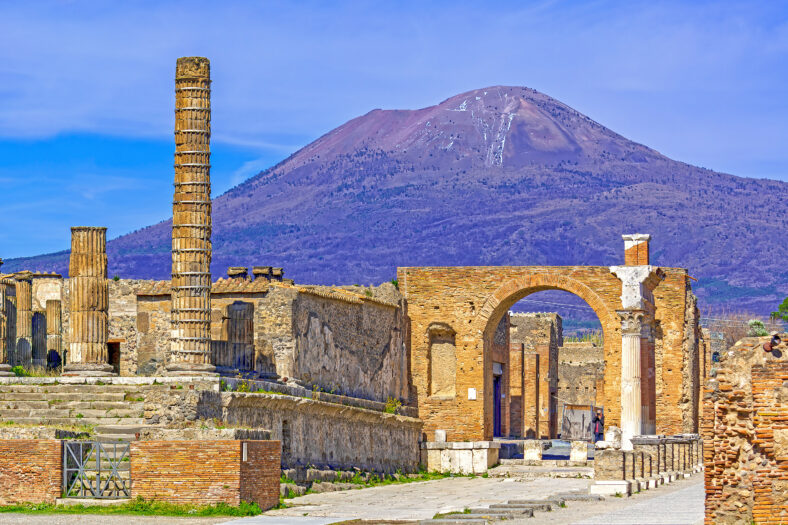AI Is Deciphering The Writing Inside This 2,000-Year-Old Scroll Scorched By Vesuvius

During Mount Vesuvius’ eruption in 79 C.E., thousands of papyrus scrolls were scorched, rendering their contents unreadable.
But now, researchers have been using artificial intelligence to reveal some of the text in one of the 2,000-year-old scrolls.
Already, one word that translates to “disgust” in ancient Greek has been deciphered, and it appears at least two times in the text. The scroll in question is called PHerc. 172, and it is housed at the University of Oxford’s Bodleian Libraries.
It is just one of many papyrus papers that were recovered in the 1750s from a Roman mansion in Herculaneum, a seaside town that was obliterated when Vesuvius erupted.
Herculaneum is now a modern Italian town known as Ercolano, which is located about 10 miles north of Pompeii.
Researchers believe the scrolls contain ancient literary and philosophical texts. However, they are badly burned and in too fragile of a condition to be physically unrolled, although many have tried over the past 270 years.
The scrolls look like lumps of charcoal because of the intense heat they were subjected to during the volcanic eruption.
Now, researchers are taking a different approach. They are using A.I. and other technologies to digitally unroll the scrolls. Since 2023, citizen scientists from all over the world have been working on revealing the texts.
Many are participating in the Vesuvius Challenge, a global contest that offers more than $1 million in prize money to anyone who can interpret the documents. A computer science student made the first big breakthrough in October 2023.

Sign up for Chip Chick’s newsletter and get stories like this delivered to your inbox.
At the time, Luke Farritor was 21 years old, and he used A.I. to expose an ancient Greek word that refers to the color purple. He won $40,000 for his accomplishment.
Last February, he teamed up with two other participants, Youssef Nader and Julian Schilliger, to reveal over 2,000 characters from one of the scrolls. They were awarded a total of $700,000.
Overall, researchers can currently see several columns of text that are each made up of roughly 26 lines. They hope to uncover even more of PHerc. 172’s text, particularly the work’s title.
“We can tell the entire scroll is full of text,” said Stephen Parsons, the leader of the Vesuvius Challenge. “Now we can work on making it show up more clearly. We’re going to go from a handful of words to really substantial passages.”
Based on other scrolls that have been interpreted, scholars think that PHerc. 172’s text is related to the teachings of Epicurus, the Greek philosopher.
“We’re confident we will be able to read pretty much the whole scroll in its entirety, and it’s the first time we’ve really been able to say that with high confidence,” Parsons added.
More About:News